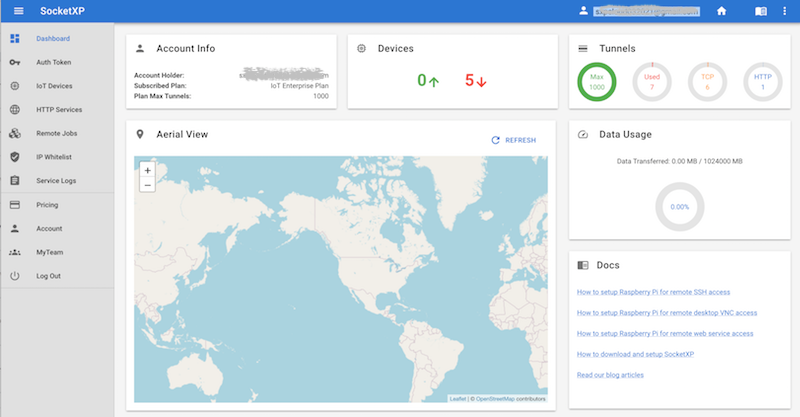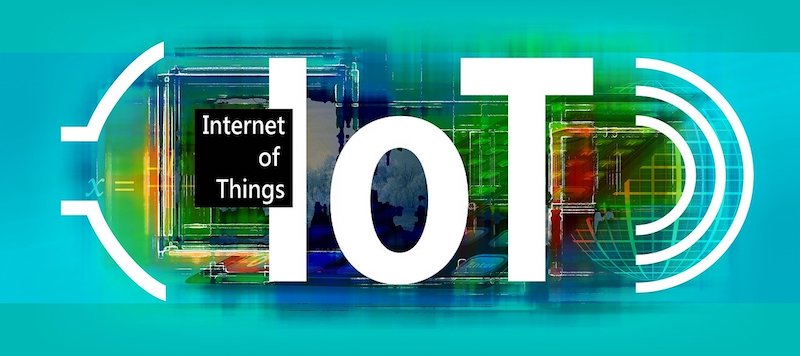In this article, we’ll compare and contrast two different types of IoT device management platforms: cloud platform vs. on-premises platform.
We’ll discuss in detail about: what are they, how they are different, advantages and disadvantages of each type of platform, and which one you should choose for your needs.
Let’s get started.
What is an IoT Device Management Platform
An IoT device management platform is a software solution that helps businesses to manage their IoT devices.
These platforms provide a variety of features, such as device registration and provisioning, device monitoring and diagnostics, device configuration and firmware updates, secure device communication, and data collection and analytics.
Example: AWS IoT, Azure IoT, SocketXP IoT Device Management Platform.

IoT device management platforms are essential for businesses that are deploying large numbers of IoT devices. IoT device management platforms are available in two different formats:
- IoT Device Management Cloud Platform
- IoT Device Management On-Premises Platform
IoT Device Management Platform - Cloud Versus On-Premises
An on-premises IoT device management platform is a software solution that is installed and run on local computers or servers in a private network. This type of platform offers greater security and control, as well as potentially lower costs for some organizations.
A cloud IoT device management platform is a software solution that is hosted and managed by a third-party vendor. This type of platform is typically easier to set up and use, and it can be scaled more easily to meet the needs of growing businesses.
Benefits of on-premises IoT device management platforms:
- Greater security and control: Organizations have full control over their data and devices when using an on-premises platform. This can be important for organizations that need to comply with strict data security and privacy regulations.
- Lower costs: In some cases, on-premises platforms can be more cost-effective than cloud platforms, especially for organizations with a large number of devices or that need to store a lot of data.
- Customization: On-premises platforms can be customized to meet the specific needs of an organization. This can be important for organizations with complex requirements.
Disadvantages of on-premises IoT device management platforms:
- Higher upfront costs: On-premises platforms typically require a higher upfront investment than cloud platforms, as organizations need to purchase and maintain their own hardware and software.
- More complex to manage: On-premises platforms can be more complex to manage than cloud platforms, as organizations need to have in-house expertise to set up, configure, and maintain the platform.
- Less scalability: On-premises platforms can be less scalable than cloud platforms, as organizations may need to purchase additional hardware and software as their needs grow.
Benefits of cloud IoT device management platforms:
- Easier to set up and use: Cloud platforms are typically easier to set up and use than on-premises platforms. This is because the vendor manages the hardware and software, and organizations can access the platform from anywhere with an internet connection.
- More scalable: Cloud platforms are more scalable than on-premises platforms, as organizations can easily add or remove devices and resources as needed.
- Lower upfront costs: Cloud platforms typically have lower upfront costs than on-premises platforms, as organizations do not need to purchase and maintain their own hardware and software.
Disadvantages of cloud IoT device management platforms:
- Less security and control: Organizations have less control over their data and devices when using a cloud platform. This can be a concern for organizations that need to comply with strict data security and privacy regulations.
- Higher ongoing costs: Cloud platforms typically have higher ongoing costs than on-premises platforms, as organizations need to pay a subscription fee to use the platform.
- Vendor lock-in: Once an organization chooses a cloud platform, it can be difficult to switch to a different platform. This is because the data and devices may be locked into the vendor’s platform.
Which type of IoT device management platform is right for you?
The type of IoT device management platform that is right for you will depend on your specific needs and requirements.
If you need greater security and control, or if you have a large number of devices or need to store a lot of data, then an on-premises platform may be a better choice.
If you need a platform that is easy to set up and use, or if you need a scalable platform, then a cloud platform may be a better choice.
It is also important to consider your budget when choosing an IoT device management platform. On-premises platforms typically have higher upfront costs(accounted as Capital Expenditure), while cloud platforms typically have smaller ongoing monthly or annual costs(accounted as Operational Expenditure).
Our Recommendation:
If you are new to IoT device management, we recommend starting with a cloud platform. Cloud platforms are typically easier to set up and use, and they can be scaled more easily to meet the needs of growing businesses.
Once you have a better understanding of your needs and requirements, you can then decide whether to switch to an on-premises platform that can be customized to your needs.
Also, if you are small company working on an IoT project, it is better to opt for the cloud version of the IoT platform, so that you could offload the software management task to professionals who do it better and you could focus entirely on your IoT project.
Even for large size companies, that do not plan to scale immediately, cloud platform is a better choice in the short to mid-term.
On-premises version of the IoT device management platform is ideal for mid and large size companies that are planning to scale up their IoT device production and deployments immediately, and has the human resources to take up the software management tasks.
“On-premises version of the IoT device management platform is ideal for mid and large size companies that are planning to scale up their IoT device production and deployments immediately, and has the human resources to take up the software management tasks.”
SocketXP IoT Device Management Platform
SocketXP is primarily a cloud-based IoT remote access and management platform that can be used to remotely manage IoT devices, Raspberry Pi or any embedded Linux devices at scale. SocketXP also provides licenses for on-premises version of its IoT device management platform software.
SocketXP IoT Management Platform provides the following features to remotely manage hundreds of thousands of IoT, Raspberry Pi or embedded Linux devices, that are located behind a NAT router and firewall on your customer’s local network or connected to a Starlink, 4G, 5G mobile cellular network:
- Remote Access
- Remote Configuration
- Remote Debugging
- Remote Software Update
- Remote Device Tracking
- Remote Monitoring
- Remote Device Management
- Remote Troubleshooting
SocketXP solution can be used to securely remote access or SSH into Linux device in your private network or private cloud.
SocketXP creates secure SSL/TLS encrypted reverse proxy tunnels to connect while communicating with your remote IoT devices.
SocketXP can also be used to create a unique HTTPS public web URL for each of the private web applications running in your remote IoT devices. Online services could communicate with your private web application using the public web URL.
SocketXP IoT Controller connects to a lightweight SocketXP agent, that needs to be installed in your IoT device, to manage, control and monitor the IoT device remotely.
Conclusion
Overall, IoT device management platforms are an essential tool for businesses and organizations that are deploying large numbers of IoT devices.
These platforms offer a variety of benefits, including improved efficiency, reduced costs, and improved security.
Choosing between a cloud or on-premises IoT platform depends on your needs, the stage you are in and the size of your organization.
In general, it is ideal to begin with a cloud based IoT device management platform before you purchase the license for an on-premises version of the platform. You should also keep in mind the time it will take for you to ramp up your production, go-to-market and see the growth.
As as an IoT startup, keeping the IoT device management software cost under control till you reach the growth stage, is crucial for your survival. A cloud based IoT device management platform with monthly or annual subscription based pricing model is ideal in this regard.
SocketXP IoT device management platform offers both cloud(saas) version and on-premises version with subscription pricing model.
Get started with SocketXP for free with no commitments. No credit card required.
To know more about SocketXP, please write to us [email protected]
